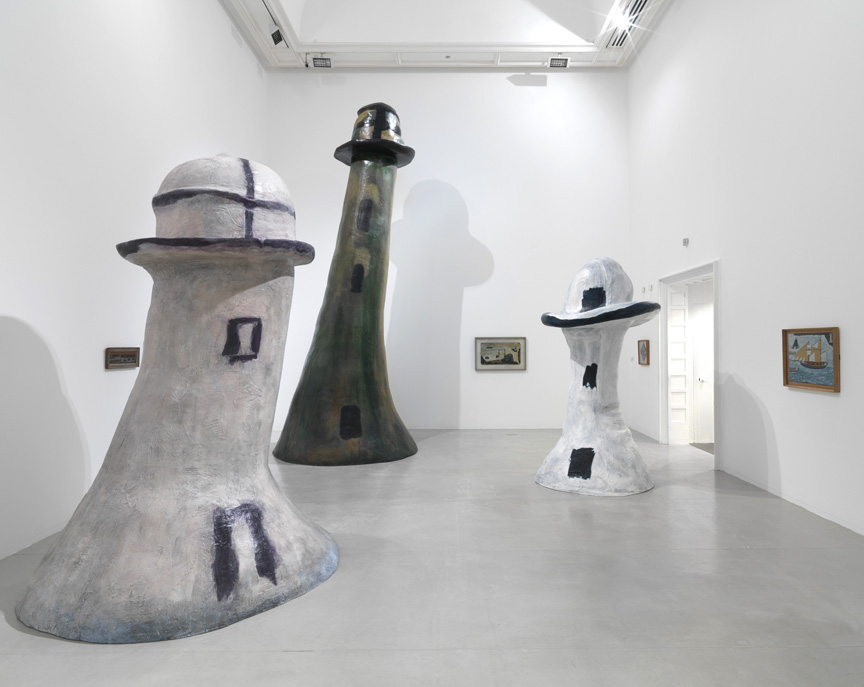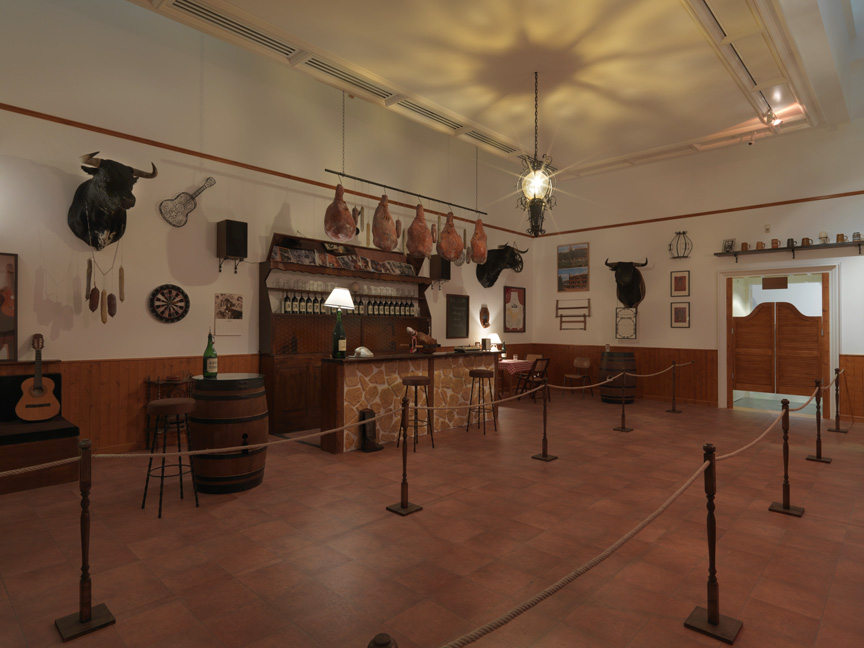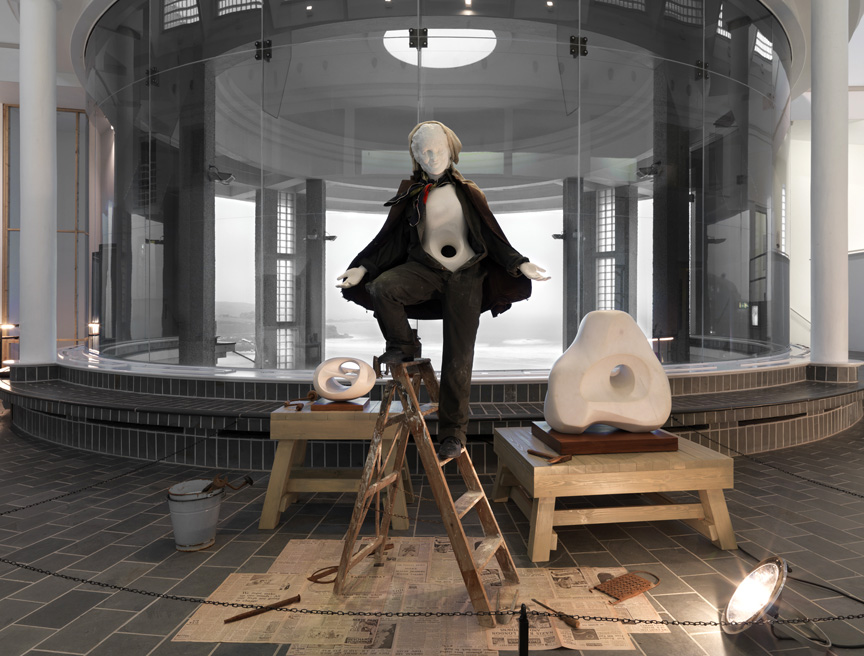Shows
Simon Fujiwara’s “Since 1982”


In one of Simon Fujiwara’s numerous autobiographical accounts, the artist recalled an encounter he had as a child with Patrick Heron’s Horizontal Stripe Painting (2012) at the opening of the Tate St Ives in 1993. He remembered being immediately transfixed by the painting's rich colors. The experience eventually led him to make two life-changing revelations about himself: first, that he wanted to become an artist, and second, that he was gay. Almost 20 years later, Fujiwara returns to the site that was one of both afflatus and trauma to stage his first major show in the UK, titled “Since 1982”—referring to the year he was born. Comprising six new installations that feature the artist’s trademark interweaving of biography and mythology, the show is as much a glorious homecoming paean as it is a playful rearticulation of the mythologies that connect the figure of the artist to his hometown.
Autobiography of a Museum (2012), the opening work, sets the tone. Exhibited before the massive stained glass window made for the building by artist Patrick Heron, the work features an architectural model of the museum half-embedded in the sand and surrounded by framed photographs from Fujiwara’s childhood in Cornwall. The display is kitsch and deliberately contrived, but the work, like much of the artist’s attempts at self-mythologization, does not simply rest at the level of parody. The careful selection and curation of the materials, for one, suggest an earnest commitment towards a narrativization of the self. For Fujiwara, the arbitrary nature of an artist’s identity only serves to reinforce the need for him to take control of his biography, to posit a self that is as much a performance as a mode of practice and agency.

In the monumental installation, Selective Memory (2012), the artist recreates the lighthouses depicted in the paintings of Alfred Wallis, in the form of four gargantuan, clumsy-looking sculptures. It is a tribute to the amateur painter whose paintings of St Ives’ seascapes led to the migration of a number of Modernist artists to the seaside town, and eventually the founding of the St Ives school. The presence of Fujiwara’s crudely constructed sculptures within the white wall gallery appear almost accidental, mirroring the serendipitous conditions through which Wallis became the unwitting predecessor to a veritable Modernist school. Yet the tenderness of Fujiwara’s gesture is undeniable, and with that he puts forth a radical claim: as fictive as they can be, myths are part of our human condition, demanding both our investment and skepticism, to be loved and unloved.

Also memorable are Welcome to the Hotel Munber (2008–10) and The Mirror Stage (2009–12) both presented here as installations that involve reimagining the artist’s personal history. The former is a recreation of a bar that Fujiwara’s parents ran in Franco’s Spain during the 1970s. Here, the artist irreverently restages the familial space as a site of his father’s (imagined) repressed homosexuality, as evident from the abundance of homoerotic innuendo within the space, serving to reclaim the narratives of homosexuality suppressed during Franco's regime. The Mirror Stage, on the other hand, originated from a play of the same name by Fujiwara that reenacts the artist’s formative encounter with Heron’s painting, framed through Lacan’s psychoanalytic theories. The work is re-presented here as a theatrical set consisting of Heron-inspired furnishings that dominated the artist’s bedroom as a teenager, along with the painting itself and a video of a rehearsal between Fujiwara and the child actor who plays him. This is the most fascinating piece in the show, compellingly conveying the complexities involved in the performance of identity through the artist’s negotiations with the bewildered child.

However, the show falls short whenever it deviates from its theatrical aesthetic. Rehearsal for a Reunion (with the Father of Pottery), after Bernard Leach (2011), for instance, an installation that recreates a glass-paneled display of Bernard Leach’s pottery that was once exhibited at the museum, appears strangely mute. Included in the display is a video of a conversation between Fujiwara and an actor playing his father, talking about the pots that Fujiwara and his father collaboratively made as replicas of Leach’s original wares during pottery classes taken in Japan. However, the tensions of the father-son relationship are missing from the rather clinical display. Mothers, of Invention (2012), in which Fujiwara cobbles together objects from Barbara Hepworth’s studio to create what appears like a mini-shrine to the artist, also seems weak. The assembled statue of Hepworth posing as the Virgin Mary comes across as nothing more than a deadpan spectacle, while the incorporation of works by contemporary artists Sarah Lucas and Andrea Fraser appears misplaced.
Nevertheless, on the whole, “Since 1982” lives up to its ambition to reinvigorate the discourse of identity. At a time when “performativity” has already been exhausted as a contemporary buzzword, Fujiwara’s peculiar blend of self-mythologization that at once critiques and celebrates itself offers provocative propositions on the demystified subject.







